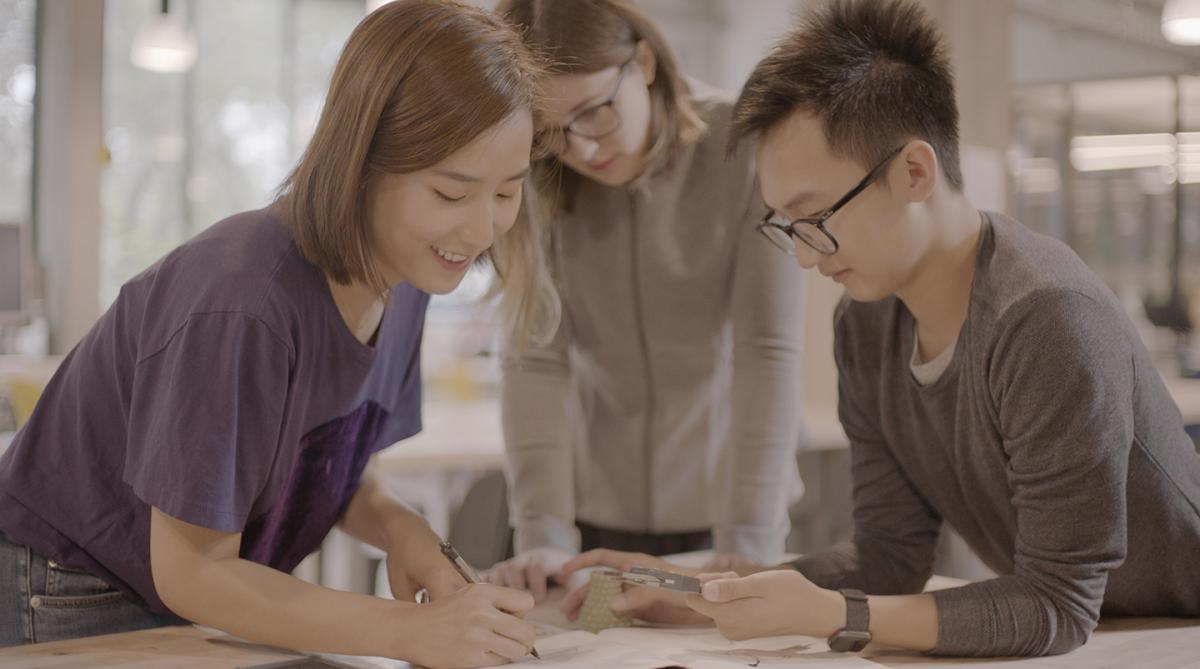From TC to HCDE
1989–2019
From Technical Communication to Human Centered Design & Engineering — Celebrating 30 years as a leading-edge Department at the University of Washington.
The origins of the Department of Human Centered Design & Engineering can be traced back to two professors: Myron White and Jim Souther of the Department of Humanistic-Social Studies in the College of Engineering.
In 1974, the pair began teaching a series of courses for students interested in the profession of technical communication, focusing on technical writing, technical editing, and managing technical communication groups in industry. Students who completed the series could either add it as a minor to another degree, or use it as a focus of an interdisciplinary bachelor’s degree in Engineering or in the General Studies Program of the College of Arts and Sciences. Growth was slow in the first few years, but as program alumni found success at corporations including Boeing and Microsoft, Souther and White were able to expand the course offerings and recruit new faculty.
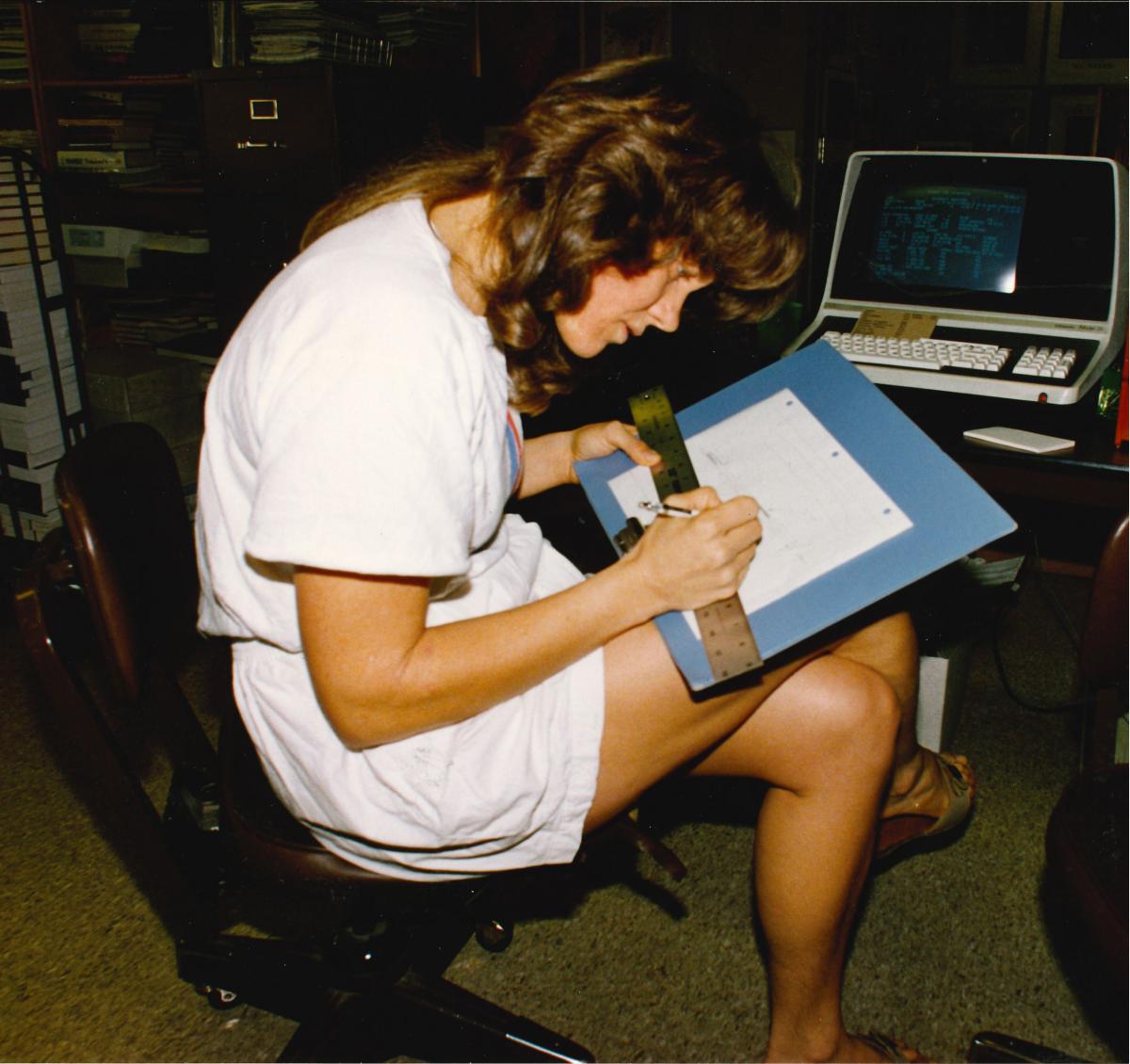 1989.The College of Engineering’s Interdisciplinary Program in Scientific and Technical Communication becomes the full-fledged Department of Technical Communication (TC), offering its own BS and MS degrees.
1989.The College of Engineering’s Interdisciplinary Program in Scientific and Technical Communication becomes the full-fledged Department of Technical Communication (TC), offering its own BS and MS degrees.
The program survived the 1983 dissolution of the Humanistic-Social Studies Department, and the seven faculty members - Myron White, Jim Souther, Mary Coney, Jan Spyridakis, Tom Williams, David Farkas, and Judy Ramey - became the nucleus of an Interdisciplinary Program in Scientific and Technical Communication. The program continued to focus on advancing communication knowledge and its importance in a world getting smaller through technology. In 1985, Professor Mark Haselkorn joined the faculty, replacing Souther as Director of the program. At that time the STC program began offering courses for an interdisciplinary master’s degree in the College of Engineering, as well as courses for the two bachelor’s degrees.
In 1986, Forbes described technical writing as an emerging specialty, noting the increasing importance of advanced degrees and the practicality of technical communication training. The article, which appeared in Forbes careers section, highlighted alumnus James Prekeges (BS STC ‘83), and his work at Microsoft. As a result of the interest expressed by the business community in seeing technical communication courses made available to their employees, the program also began offering a year-long evening program through the University of Washington’s Extension Program. This partnership established the Certificate Program in Technical Writing and Editing.
1989
The Department achieved a landmark goal in 1989 when the Interdisciplinary Program in Scientific and Technical Communication became the Department of Technical Communication, now offering its own Bachelor of Science and Master of Science degrees.
"Departmental status means a lot to us and to the entire field of technical communication,” states Mark Haselkorn in the 1989 issue of the Department’s posTComm newsletter. “It represents a coming of age of this field of study, and it’s attracting attention from our colleagues around the country.”
"
Technical Communication, long an afterthought in technology-driven businesses, is acquiring increased stature as industries strive to incorporate user needs into the complex design and development of high-technology products. This growing stature is reflected in the elevation this past December of the program in Scientific and Technical Communication to the Department of Technical Communication in the College of Engineering."
—1990 POSTCOMM NEWSLETTER
In 1990, Judy Ramey led the Department in the development of the Laboratory for Usability Testing and Evaluation, the first of its kind in the country to be located in an academic setting. The LUTE video-based toolkit provided the faculty and their research partners with a state-of-the-art facility for conducting research aimed at understanding and improving the usability of information and products.
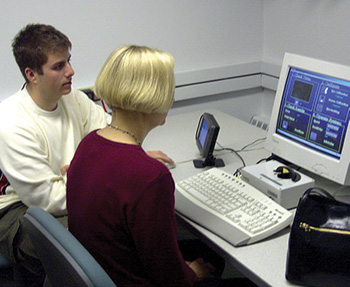 The Department's award-winning laboratory for usability testing and evaluation (LUTE) facilities supported researchers conducting interviews, prototyping, usability testing, eye tracking, and more.
The Department's award-winning laboratory for usability testing and evaluation (LUTE) facilities supported researchers conducting interviews, prototyping, usability testing, eye tracking, and more.
“Technical Communication always had a real emphasis on end-users and on the perspective of people who were affected by technology, which was why it was a natural fit for the Department to have a usability lab,” said Professor Mark Zachry.
Professor Ramey would go on to win the Diana Award from the Association of Computing Machinery (ACM) Special Interest Group on Design of Communication (SIGDOC) in 2007 for the Lab, being recognized for the Lab's long-term contribution to the field of communication design. Past recipients of the Diana Award award include IBM, Adobe, and Apple.
In 1997, Ramey succeeded Mark Haselkorn as Department Chair, and in that year’s issue of the posTComm newsletter she writes, “TC is finally coming into its own. The media are rife with news about this being the information age. But information isn’t really what you need; what you really need is communication. A database manager can manage information; a technical communicator can make that information meaningful to an audience for a purpose.”
“The explosive growth in computing power and the web, the penetration of new technologies into our daily lives in growing abundance, the globalization of the profession, and the spreading recognition of the vital role played by information design in successful communication challenge all of us—practitioners as well as educators—to push the power of our discipline to its limits.”
—JUDY RAMEY, LETTER FROM THE CHAIR, AUTUMN 1997
1999
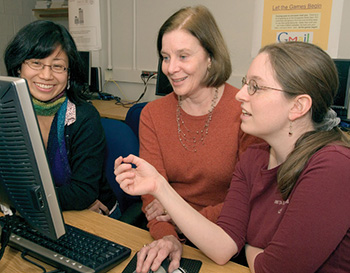 Professor Jan Spyridakis (center) in the Department's computer lab with first PhD graduate Carolyn Wei (left)
Professor Jan Spyridakis (center) in the Department's computer lab with first PhD graduate Carolyn Wei (left)
The discipline of technical communication was quickly expanding to cover the growing digital world as well as the print-based world. The new millennium brought enough demand for the Department to launch an evening master’s program in Technical Communication.
The first master’s students were conferred in 2002, the same year that TC launched a doctoral program. A new graduate certificate in User-Centered Design followed one year later.
To keep pace with demand, and to be able to holistically analyze the user's experience with technology, the Department recruited faculty from new areas of research. Faculty were studying topics that ranged from robotics, to mobile technology, to design for underserved communities, but they all shared a passion for how information and technology can best suit human needs.
The time to change TC’s name to reflect the gradual evolution was here.
New name, same world-class department
"No matter what we are called, this department has always been at the leading edge of our field," said HCDE Professor Mark Zachry in 2019.
Professor Zachry was one of the faculty members tasked by Department Chair Jan Spyridakis to serve on the Department's name change committee in 2008-2009.
There were several factors influencing the desire for a name change, but most importantly, "The name Technical Communication was limiting the public perception of all that we were doing," Zachry said.
Over several months, the committee conducted surveys, met with stakeholders, and reviewed current classes and research to determine what new name could encompass the diversity of research and education in the Department.
The committee surveyed peer institutions across the country to ask what they think makes the University of Washington's Department of Technical Communication unique. They examined funding agencies like the National Science Foundation to compare the names of institutions receiving funding for similar research projects. They also consulted with stakeholders within the University to make sure the new name was not overstepping into the domain of other departments. "We couldn't claim to own something like human-computer interaction which is something people from many different units on campus like the iSchool and CSE are associated with," Zachry said. The committee arrived at Human Centered Design & Engineering.
The name encompasses the Department's commitment to prioritizing the human experiences in the design and use of systems and technologies. "Technology will always change, so we want to be at the forefront of thinking about how to develop a deep understanding of people and technology—and bridging the two," said Zachry. "Sometimes, that means we are looking at communication, sometimes design, and sometimes it's through research to more deeply understand what the issues are. As a whole, those are the things we do— and have always done—really well."
Zachry credits the students with helping the Department to stay at the leading edge. "Our students are aware of things that are changing rapidly in technology and society. Their new ideas and energy inspire us as educational and research leaders. We have undergraduates launching into exciting careers, PhD students who are tackling important social and technological innovation issues, and master's students who are creative thinkers and accomplished professionals. At all levels of our programs, our students are bringing incredible things to the conversation."
2009
In January 2009, after a unanimous faculty vote, the Department received approval from the Office of the Provost to change its name to the Department of Human Centered Design & Engineering (HCDE), effective in degree titles beginning in Autumn 2009.

HCDE faculty and students welcoming the incoming class of PhD students, September 2011
The name change helped increase interest in the HCDE academic programs, and was more effective in conveying the department’s research priorities to potential collaborators and funding organizations. The department secured twice the dollar amount of grant funding within that first year and saw a 400% increase in applicants to the master’s program in the first two years.
Despite the challenges of state budget cuts over several consecutive years, the HCDE faculty and staff developed innovative strategies to serve the needs of students and the goals of the program. The 2010-2011 academic year brought the formation of an External Advisory Board and the Corporate Affiliates Program, both still robust today. The External Advisory Board works to ensure that HCDE’s curriculum is relevant and influential in response to academic and industry trends, and the Corporate Affiliates Program connects students with resources for jobs and internships from sponsoring organizations. In the ten years since HCDE changed its name, it has seen exponential growth in the alumni, faculty, and research impact. Between Autumn 2009, when the first HCDE degrees were granted, through Winter 2019, the Department graduated 1,184 students across the bachelor’s and master’s degree programs, and 39 with their doctorate in HCDE.
2019
As the Department’s alumni population grows, so does its reach across the globe. In 2019, HCDE formalized the Alumni Leadership Board to harness the power of the Department's alumni to build community across the alumni and student body. Also in 2019, HCDE embarked on a new strategic plan that will align the Department around a bold path for the next five years. The plan represents the Department's commitment to expanding awareness of its research and academic programs, advancing diversity and equity across HCDE's work and communities, and ensuring that the Department maintains a world-class educational experience.
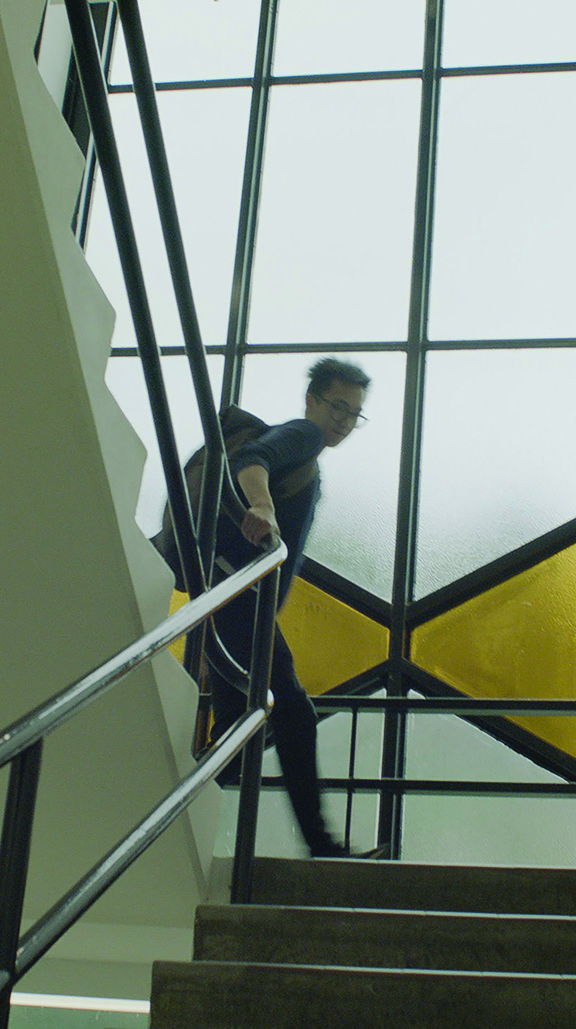 Over the next five years, the Department is prioritizing:
Over the next five years, the Department is prioritizing:
- Advancing HCDE as a high quality, influential, interdisciplinary design and engineering program, and ensuring its mission and vision are widely recognized
- Balancing total HCDE program size and scope with demand, ensuring the financial stability and sustainability to maintain excellence in teaching and research
- Advancing and sustaining diversity and equity across our work and communities
- Developing and executing a strategic approach to bolstering and diversifying high-quality research and research impact
- Strengthening integration with the College of Engineering’s current goals and influence future goals
Thanks to the care of many driven faculty, staff, students, and supporters over the last thirty years, the Department of Human Centered Design & Engineering is poised to be the leading academic program integrating empathy and collaboration to design and engineer equitable practices, tools, and technologies across the globe. ■
